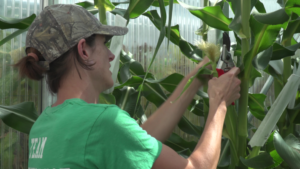
Hi readers,
Boom! I’m back with another — I told you, I’m really back, after 3 years of hiatus focused on the new book. Anywyay, first, I want to thank you for all the outpouring of support and kind notes on my return to writing. And of course, the preorders for my upcoming book THE COLD START PROBLEM which is all about user growth in the context of network effects — relevant for social apps, marketplaces, workplace collaboration apps, and so on.
For today, I’m cross-posting and combining two tweetstorms I recently did on the future generation of social apps, and what we can learn from the Web 2.0 era. I’m toying with the idea of doing a series on all of these “forgotten lessons” with the idea that they will be relevant for people coming up. More soon!
thanks,
Andrew
(writing from San Francisco, but headed back to LA shortly!)
Before and after — social network edition
When you examine the ideas that are percolating now for social apps, you see a clear pattern.
The past generation of social apps won the market through a playbook:
- building big networks with feeds for discovery
- creating a followers/status competition for engagement
- bringing together creators and audiences
- monetizing with ads
- supporting photo, text, video
The next generation of social is necessarily a reactionary movement:
- small networks or algo-driven big ones
- creating real connection with people
- letting creators own their audiences
- monetizing directly with subs, NFTs, etc
- evolving media format towards interactivity
The most interesting things about these “new” ideas is that they simply didn’t make sense back in the original emergence of the social network category.
Why didn’t these reactionary ideas make sense?
Back then, building large networks with invites and solving discovery with feeds was the right move when it was novel to simply see what your friends were up to. Today, too many connections is bad. Maintaining which of 1000s of high school friends and employers have access to which content, is quite simply a chore. Small chat groups simplify this. Algo-driven feeds also simplify by just showing you the best stuff. More will be invented to solve the problem of maintaining connections.
Similarly, the era of edited, posed travel, food, and concert photos showing the top 1% of peoples’ lives is creating a fake reality that is repetitive. This worked at first since it was a spectacle. A new app can focus on what’s real, or who has talent, or something in reaction to this overly repetitive 1%.
Originally, creators didn’t exist. They weren’t a thing. So bringing them together with their audience — even if they didn’t own that audience — was amazing since it provided a degree of ads-based monetization. Today, creators are looking for more, and new apps can cater. A lot of the Creator Economy, of course, is a reaction to pre-existing platforms that get between a creator and their audience. And brands sponsorships who inevitably nudge creators into compromising their integrity. New apps can target this and align creators with their audience. NFTs, subscription, ecommerce, and other biz models now exist for creators. More will come – lots of innovation here. Furthermore, the “back office” will become an important battleground. Instead of coffee shops and retail, online will be the next generation of small business.
Finally, the last decade of social has been about simply putting videos, photos, and text up. And making this easy for anyone to publish. This has unlocked hundreds of billions of dollars of business value. I think it may not be enough to simply do more photos, text, and video. Instead, new platforms will emerge that let people author 3D content more easily — and maybe put it into a game. Or interactive content. Or NFTs. And of course audio. All of these new forms of media will probably look like toys at first, but they may catch on in a big way.
All of these ideas weren’t the first set to tackle during the Web 2.0 days. In a world where uploading a video was hard, it made sense that Youtube was the first type of app to be built. Social status and competition is an easy engagement hook.
It is the success of the incumbent social networks that have established dominant norms that then allows new startups to try new ideas that might work. However, the new is built from the old, and there’s an important set of knowledge and skillset from 15 years (!!!) back that needs to be considered. Yes, let’s talk about Web 2.0.
The lost art of Web 2.0
There was a generation of founders trying to add social to everything. Social and music. Social fitness. Social news. Social social social. There were new kinds of creation, profiles, etc. No, I’m not talking about today. I mean 15 years ago!
There’s a lost art of Web 2.0.
This was the era of Flickr, Tumblr, Blogger, Hi5, Digg, Slide, Imeem, Flixster, Odeo, and dozens of other companies that just the grizzled old tech veterans now remember. Web 2.0 was about a lot of things. There was big UX breakthroughs, like tagging, profiles, feeds, photos, and everything else in user generated content. This was built on AJAX (lol!), Rails, early cloud platforms, and so on. New apps were being built in weeks – but most failed.
A key lesson from Web 2.0 — growth matters
After all, one of the hardest lessons we learned from that period: It wasn’t enough to build the app, you needed to also grow a critical mass of users. Without the right users there at the beginning, a user-generated content product would inherently be too shallow on content. Low engagement would lead to more low engagement.
People solve this with ideas like wait list hacks, A/B tested invite flows, contact importers, “people you may know” algos. Embedded video widgets, Facebook platform API hacks, viral factor tracking, and so on. The details of many of these ideas are intricate — to this day, there are teams of dozens of people working on “people you may know” recommendations at companies like LinkedIn and Facebook. Building the density of connections is incredibly important. Yet these fundamental tactics are getting swept under the rug while fun, new concepts like creator houses, memes, etc take all the spotlight.
15 years later, social is back but much of the hard won lessons of web 2.0 have been lost. The folks of that era are in their 40s now – more likely to be investors or execs at big tech cos (you know who you are! Lol) – than the new gen founders trying to build the new social app. Of course history will not repeat itself – it’ll all be reinvented
Yet many of the same core strategies still hold. It’s still better to focus on a single community, gain saturation, before adding adjacent networks. Viral loops are still a thing that can be constructed, measured, and optimized. The core stickiness of an app is all about p/m fit
The next generation of social
Web 2.0 was a magical time with 1000s of new social apps. Today’s resurgence is comparable in scope, but with a larger maret, built on the supercomputer in our pockets, and with the full knowledge of how big it can be when everything goes right.
It’s gonna be magic again.









